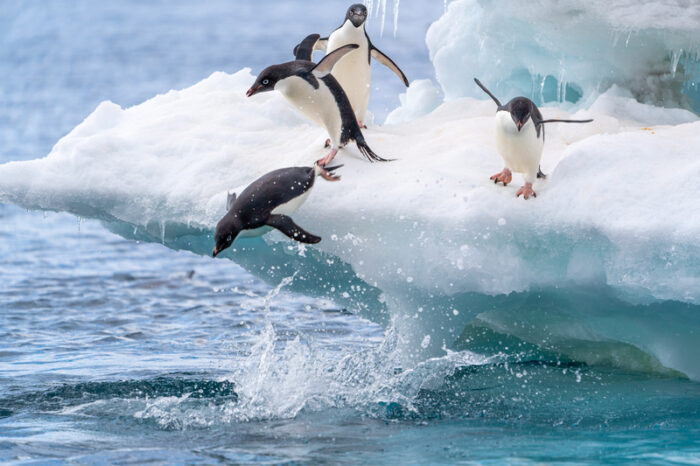Animal conservation is a challenging task. It takes a lot of effort and collaboration between different groups.
And the progress can be slow. We're talking about living things, after all! Many species require very specific living conditions—conditions that must be recreated for the animals to thrive in their new environment.
It can be especially challenging when you're a zoo in Mexico and your new animals come from Antarctica!
The Adelie penguins at the Guadalajara Zoo live in an enclosure designed to recreate the conditions of Antarctica. (Getty Embed)
Staff at the Guadalajara Zoo worked to get conditions just right for a clutch of Adelie penguin eggs. And their hard work has paid off.
On January 26, zookeepers announced that six new Adelie penguin chicks had been born! And, not surprisingly, the newborn birds have become an instant hit with visitors.
Direct from ... San Diego?
A vet weighs one of the newborn chicks. (Getty Embed)
Though the birds were born at the zoo, the eggs were not laid there. So where did they come from? If you guessed Antarctica, we wouldn't blame you. But the truth is far more unexpected.
San Diego, California!
It appears that the San Diego Zoo is one of only three institutions in North America that have experience working with the Adelie penguin. And though Guadalajara already had its own Adelie penguins, the new delivery from San Diego served another purpose.
Maintaining genetic diversity in its penguins.
A healthy mix
This chick will live the first part of its life in a protected nursery before joining the adult penguins in the main enclosure. (Getty Embed)
Genetic diversity—or making sure that a group of animals come from more than one group of animals—is pretty easy in the wild. But in captivity, it is exceptionally difficult. And why does this matter?
When a group of animals is so localized that all of the offspring continue to come from the same sets of parents, it leaves the young more exposed to troubles with diseases and birth defects. The more diverse the selection of potential mates, the healthier the population is for everyone!
In this case, these adorable chicks will grow up to one day have young birds of their own with some of the Adelies who had already been living in Guadalajara. What a great plan!
To learn more about the journey these birds made to Mexico, as well as how their days are unfolding so far since hatching, watch this report from CBC News below.
 Whee! Adelie penguins dive into the sea in Antarctica. (ID 207591794 © Sandra Nelson | Dreamstime.com)
Whee! Adelie penguins dive into the sea in Antarctica. (ID 207591794 © Sandra Nelson | Dreamstime.com)









